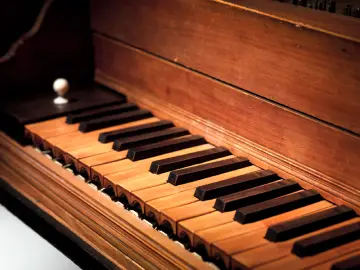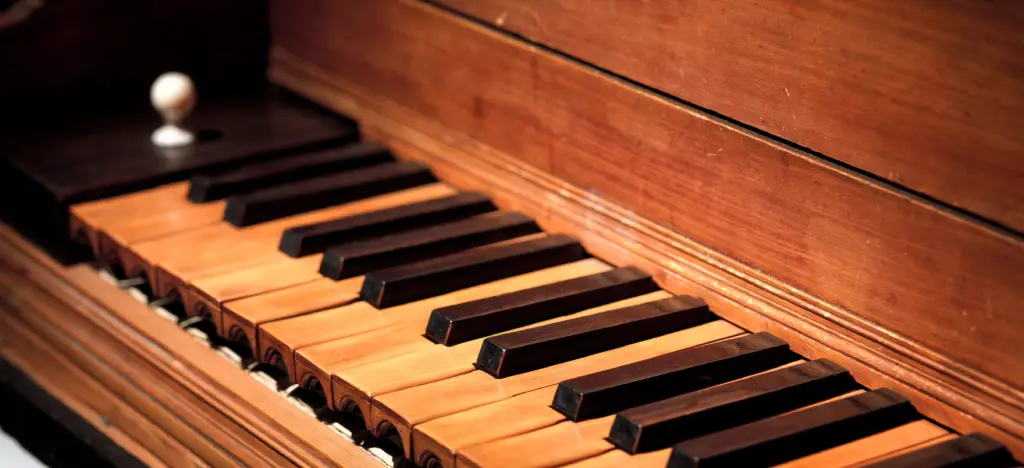If the piano were invented today, we’d call it a startup.
It solved a problem, disrupted a market, and rewired the way people made music. But unlike most tech fads, it didn’t fade or get replaced — it evolved. From palaces to pubs, jazz bars to bedroom studios, the piano has shaped music for over 300 years. And somehow, it still feels fresh. So what makes this clunky old box of hammers so enduring? And why do we keep coming back to it?
- Before the piano: the problem of expression and control
- The piano's inventor: Bartolomeo Cristofori, the quiet disruptor
- The piano goes viral: how it spread across Europe
- How the piano became a household instrument
- Reinvention: jazz, rock, soul, and beyond
- The piano in the digital age: keyboards, apps, and AI
- Why the piano endures
- Ready to make the piano your own?
- FAQ: The history of the piano
Before the piano: the problem of expression and control
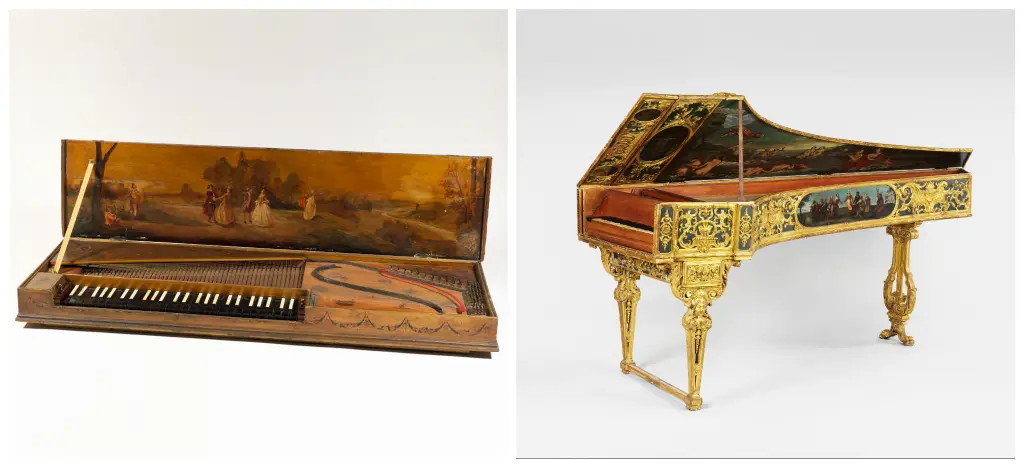 Before the piano came along, keyboard instruments were clever but frustrating. You either got volume or expression — never both.
Before the piano came along, keyboard instruments were clever but frustrating. You either got volume or expression — never both.
The harpsichord (above right) was the louder, flashier option. Press a key, and a tiny quill would pluck the string. The result? A bright, crisp sound that carried well in a room ... but that was it. It didn’t matter if you tapped the key gently or smacked it like a fly: every note came out exactly the same.
The clavichord (above left), on the other hand, let you control dynamics. Press a key, and a small metal tangent struck the string and stayed in contact, so you could shape the sound a little and even add a kind of wobbly vibrato. But the clavichord was very quiet more suited to bedrooms, studies, and small private rooms, not concert halls or gatherings. Mozart often took one on the road for practice and composition, though it was never loud enough for performance.
So musicians were stuck. One instrument sounded great but felt dead under your fingers. The other was expressive but far too quiet to use anywhere public. If you wanted a keyboard that could respond to you — get louder, softer, more human — it simply didn’t exist.
Not yet.
💡 ARTMASTER TIP: The piano gave players dynamic control — but are you using it properly? Many beginners (and even intermediates) press too hard and lose nuance. Find out if you're pressing piano keys too hard — and how to fix it.
The piano's inventor: Bartolomeo Cristofori, the quiet disruptor
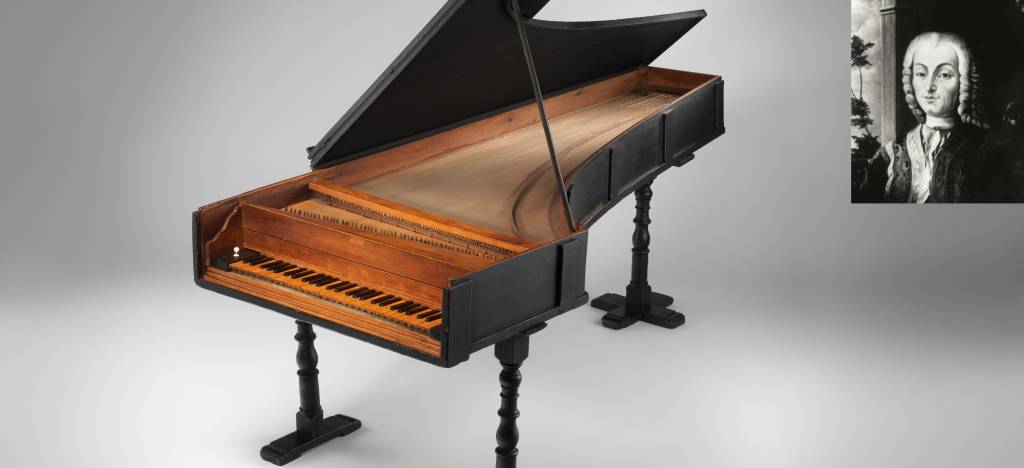 Cristofori wasn’t a rockstar composer or a bold public figure. He was a technician — a harpsichord builder working for the Medici family in Florence. But around 1700, he came up with something that would quietly change music forever.
Cristofori wasn’t a rockstar composer or a bold public figure. He was a technician — a harpsichord builder working for the Medici family in Florence. But around 1700, he came up with something that would quietly change music forever.
He designed a keyboard where hammers struck the strings instead of plucking them. That alone was a breakthrough. But the real magic was in what’s known as the escapement mechanism — a clever bit of engineering that let the hammer hit the string and immediately fall away, so the note could ring out freely. It meant you could control volume and tone just by how you played the key.
Cristofori didn’t patent it. He didn’t name it after himself. He built a few prototypes and got on with his life. But like a lot of good ideas, it spread — slowly at first, then with real momentum. And what he built became the basis for every piano that followed.
Note:
Only three of Cristofori’s original pianos survive today, all dating from the early 1700s. They had around 49 keys — just four octaves — and used gut and brass strings, not the high-tension steel found in modern pianos. The sound was lighter and more delicate, but the core design has barely changed in over 300 years.
💡 ARTMASTER TIP: Cristofori gave pianists dynamic control — but using it well takes practice. These 10 advanced tips (including a free lesson by David Bennett) will help you turn that subtle control into expressive, powerful playing.
 💡 Artie is unlike any other piano app
💡 Artie is unlike any other piano app
Meet Artie — the world’s first AI piano teacher that actually listens to your playing and gives real-time feedback to help you improve faster.
Download Artie for free now
The piano goes viral: how it spread across Europe
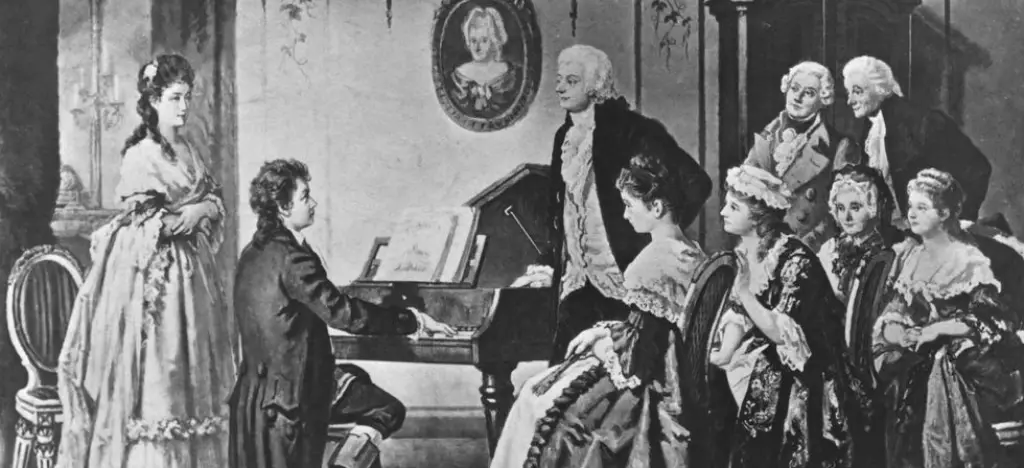 Cristofori had solved the problem, but it took a while for anyone to notice.
Cristofori had solved the problem, but it took a while for anyone to notice.
His early pianos were expensive, fragile, and unfamiliar. Musicians were used to harpsichords, and this softer, stranger instrument didn’t catch on straight away.
But the idea stuck. Builders across Europe began improving the design — more keys, stronger frames, better sound. In Augsburg, Johann Andreas Stein created the light, sensitive action Mozart preferred. In Vienna, Anton Walter built the piano Mozart used. In London, John Broadwood made louder, sturdier models — one of which he sent to Beethoven. And in Paris, Érard introduced faster mechanics that suited Liszt’s fireworks.
By the time Mozart came along, the piano was ready. By Beethoven’s day, it had grown teeth. And once composers realised it could whisper and roar in the same phrase, there was no going back.
How the piano became a household instrument
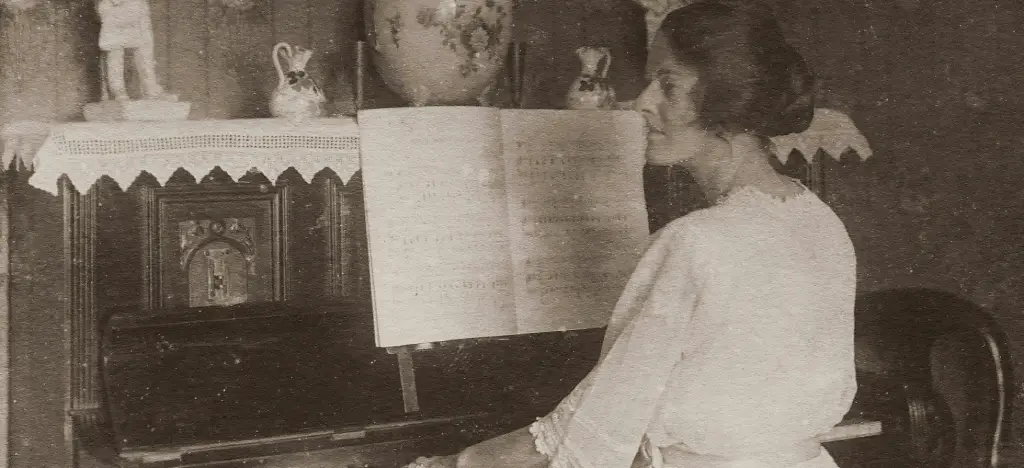 By the 19th century, the piano had broken out of the salons and concert halls and landed in the front rooms of the middle class.
By the 19th century, the piano had broken out of the salons and concert halls and landed in the front rooms of the middle class.
Playing the piano wasn’t just a musical hobby. It was a social skill, a sign of good breeding, and — particularly for women — something close to a requirement. If you were a well-to-do young lady, you were expected to play a few pieces, preferably with grace. If you were a suitor, you might be invited to sing along while she played — a carefully choreographed kind of courtship.
But the piano wasn’t just about etiquette. Behind closed doors, it became a private emotional outlet. For many — especially women, who had few creative freedoms — it offered a rare moment of agency. You could pour something of yourself into it, even if no one else was listening.
And it was everywhere. Families gathered round for singalongs. Sheet music sold in the millions. Before records and radio, the piano was how people heard music — by making it.
💡 ARTMASTER TIP: For many women, the piano was one of the few socially acceptable ways to make music — but it didn’t always lead to a career. That legacy still echoes today. Find out why there are fewer women in the music industry.
Reinvention: jazz, rock, soul, and beyond
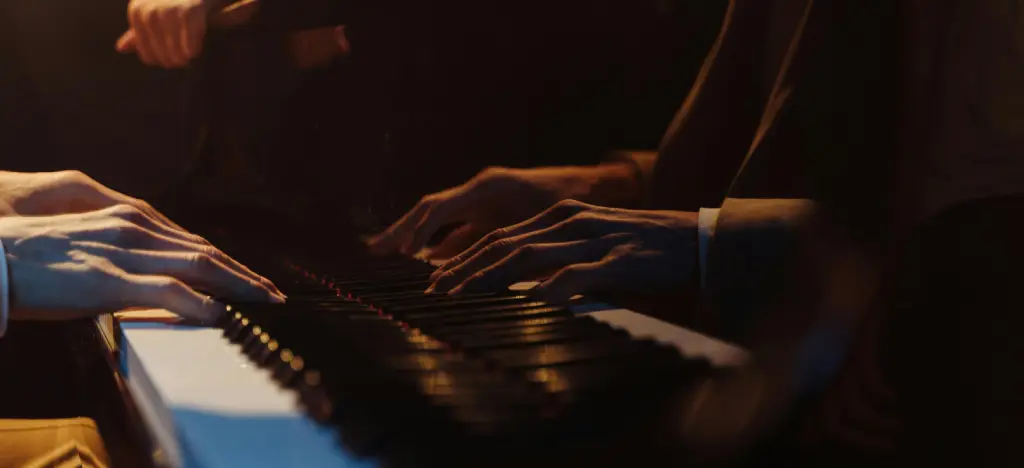 Once the piano found its voice, it didn’t stay polite for long. By the early 20th century, it had wandered out of drawing rooms and into bars, clubs, and street corners — and picked up some swing along the way.
Once the piano found its voice, it didn’t stay polite for long. By the early 20th century, it had wandered out of drawing rooms and into bars, clubs, and street corners — and picked up some swing along the way.
In New Orleans, it became the engine of early jazz. In Harlem, it danced through stride and boogie-woogie. Players like Jelly Roll Morton, Fats Waller, and later Thelonious Monk and Art Tatum turned the piano into something rhythmically alive — not just an instrument, but a personality.
From there, it slipped into blues, gospel, rock ’n’ roll, soul. Ray Charles, Nina Simone, Aretha Franklin, Elton John, and Freddie Mercury all used the piano as a central voice. It could shout, weep, tease, or seduce. And even as guitars, synths, and samples took over, the piano never really left the room.
Even now, you hear it everywhere. In stripped-down ballads. In lo-fi beats. In pop choruses and hip-hop loops. That signature sound — physical strings, real resonance — still carries emotional weight.
The piano didn’t resist change. It embraced it. It found new roles, new genres, new players. Whatever came next, it made itself useful.
💡 ARTMASTER TIP: Want to hear how the piano shaped jazz, soul, and pop? These 40 iconic piano intros show how it set the tone for some of the most unforgettable songs ever recorded.
The piano in the digital age: keyboards, apps, and AI
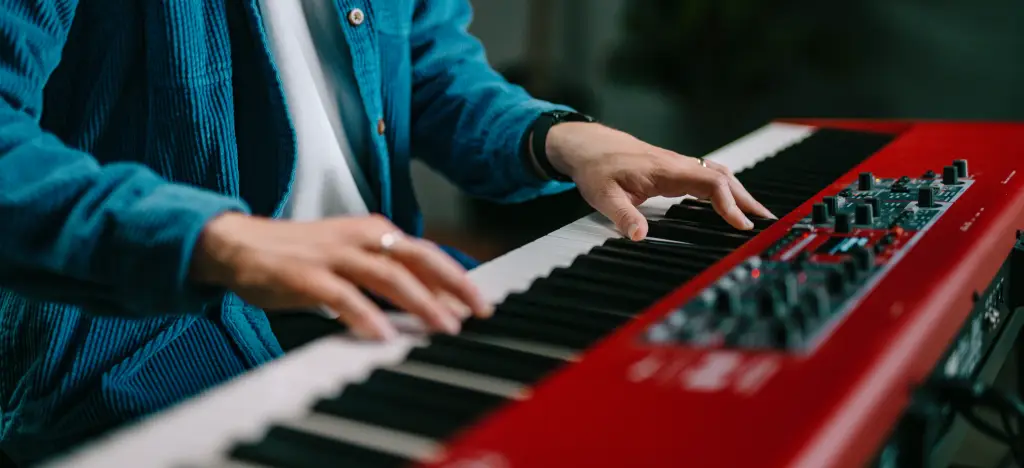 Today, most people don’t grow up with a baby grand in the living room. And that’s fine — you don’t need one. A small keyboard and a decent pair of headphones will get you surprisingly far. You can plug into a laptop, learn online, record a track, or play quietly at 2am without waking the neighbours.
Today, most people don’t grow up with a baby grand in the living room. And that’s fine — you don’t need one. A small keyboard and a decent pair of headphones will get you surprisingly far. You can plug into a laptop, learn online, record a track, or play quietly at 2am without waking the neighbours.
The piano has adapted, again. There are digital versions, MIDI controllers, sample libraries, apps that light up keys in real time. And somehow, despite all that change, the instrument itself hasn’t lost its appeal. It’s still how people start learning music. Still where songs begin.
Now we’re seeing something else: the way people learn piano is shifting too.
Some are trying AI-based tools that listen, respond, and adapt as you play — not in a robotic way, but more like a good teacher sitting beside you. Artie is one of those. It’s early days, but it points to something interesting: the piano isn’t just surviving in the digital age — it’s quietly inviting new ways to connect.
Cristofori couldn’t have predicted any of this. But the impulse behind it — to give players more control, more feeling, more feedback — that part hasn’t changed.
💡 ARTMASTER TIP: Today’s piano doesn’t stop at strings and keys. If you’re curious how modern apps actually teach piano — and whether they really work — I tried them all so you don’t have to. Here’s what I found.
Why the piano endures
The piano has lasted not because it’s old, but because it still speaks. There’s something about its sound — the weight of the hammers, the vibration of real strings — that feels more human than almost anything else in music. You’re not triggering a preset. You’re shaping something physical, something alive.
It can shimmer, growl, weep, or vanish into silence. It can carry melody and harmony at the same time, or sit in the background and let someone else take the spotlight. You can write with it, perform with it, mess about with it. It doesn't mind.
And that’s part of the magic: it doesn’t lock you into a genre or a method. You can be a beginner or a virtuoso, a composer or a bedroom producer. It’s simple enough for a child to explore, deep enough to keep you busy for life.
The piano endures because it never stops adapting — and yet it never stops sounding like itself. Three centuries in, and it still offers the same quiet invitation:
Sit down. Play something. See what happens.
Ready to make the piano your own?
Learn with David Bennett — the YouTube educator trusted by 1.2M+ subscribers.
Courses: Piano for Beginners, Piano 2, Piano – Sound Like a PRO, Piano for ProducersOr try Artie — the world’s first AI piano teacher that gives real-time feedback as you play.
✅ Try David’s courses free for 7 days
✅ Join the waitlist for Artie
For more piano tips check out:
→ 25+ easy two-chord songs
→ 60+ easy 3-chord songs
→ 100+ four-chord songs
→ 20 beginner-friendly songs to learn on piano
→ How to learn piano fast: practical tips for busy adults
→ How AI is revolutionising music learning
Find all our piano guides here
FAQ: The history of the piano
When was the piano invented?
The piano was invented around the year 1700 by Bartolomeo Cristofori, a harpsichord builder working in Florence for the Medici family.
What makes the piano different from the harpsichord?
Unlike the harpsichord, which plucks strings, the piano strikes them with hammers — allowing players to control the volume and tone depending on how hard they press the keys.
How did the piano become popular?
Although slow to catch on at first, improvements by builders across Europe — and endorsement from composers like Mozart and Beethoven — helped the piano gain popularity in the 18th and 19th centuries.
Why did the piano become so important in music?
Its dynamic range, expressive potential, and versatility made the piano central to classical, jazz, blues, pop, and rock. It became both a solo and accompanying instrument across genres.
What role does the piano play in music today?
Today, the piano is still everywhere — from ballads and film scores to hip-hop loops and lo-fi beats. It remains one of the most widely used and emotionally expressive instruments in modern music.
About the author
Matt Ford is a musician, teacher, writer, and lifelong student of sound.
With years of experience in both performing and teaching, he shares practical advice through ArtMaster to help musicians at every level build skill and confidence in their playing.
